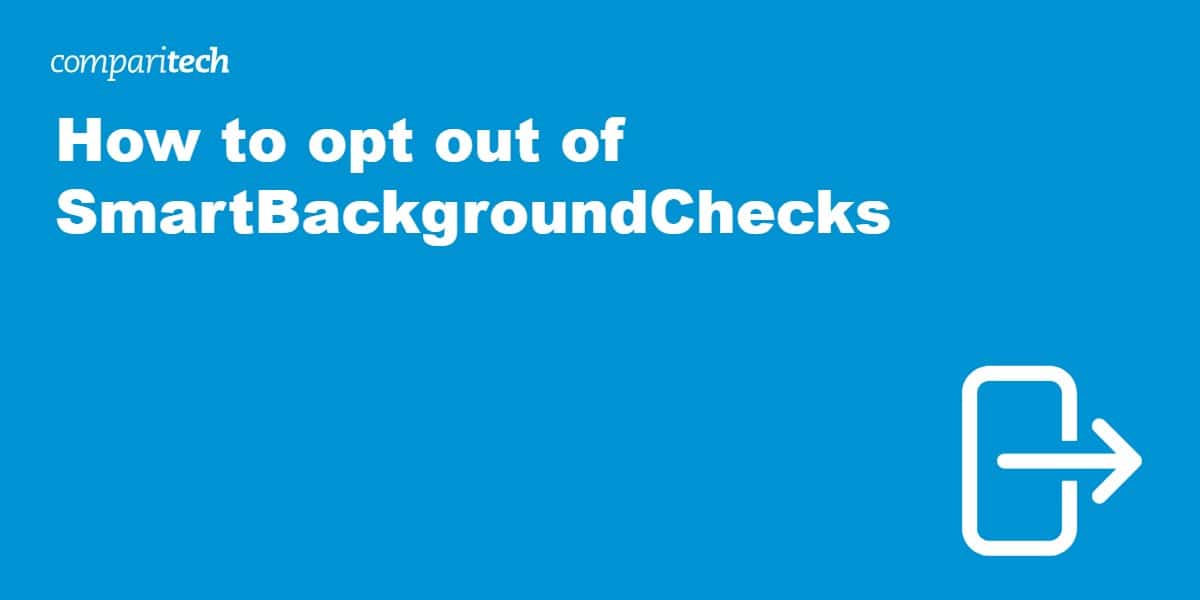SmartBackgroundChecks scours public sources to compile personal information. It empowers users to conduct thorough background checks on just about any individual. The amount of data amassed by companies like SmartBackgroundChecks is enough to send a shiver down your spine. SBC claims to have over a billion personal records harvested from over 2000 public sources.
SmartBackgroundChecks is likely to have already published your sensitive personal data, including your full name, past aliases, birthdate, addresses, employment history, and other confidential details. This gold mine of information is readily accessible to anyone who can afford it, posing risks such as phishing, fraud, identity theft, and stalking.
Harvesting and disseminating this kind of private data should be stopped. However, existing regulations allow companies to scrape and distribute data already in the public domain. People search websites have transformed this practice into a thriving business, happily selling your data without questioning the motives of buyers.
The silver lining is that you can harness consumer protection rights under laws such as GDPR and CCPA. These allow you to request data brokers erase your personal information from their databases. In this guide, we will walk you through the steps needed to opt out of SmartBackgroundChecks. Please read the article in its entirety because there are grey areas and caveats that you need to understand.
Our favorite data removal service: Incogni
When it comes to reliably removing your data from SmartBackgroundChecks and more than 180 other data brokers, aggregators, and people-finding websites, we highly recommend the affordable data removal service Incogni.
It is operated by the same company that brought you Surfshark: A VPN powerhouse well-known by consumers worldwide for its unwavering commitment to consumer privacy and no-logging practices. Coming from such a trustworthy background, you can be sure that Incogni will safeguard your online privacy.
Incogni requires minimal data to get started on removal requests. This sets it apart from competitors like DeleteMe, which asks you to fill in lengthy forms and provide a hefty amount of private info to perform takedown requests.
This simplifies the subscription process, making Incogni extremely easy to use. You can remove your data from SmartBackgroundChecks without providing your personal data to yet another online service, which feels counterproductive (more on this later).
Incogni significantly reduces the risk of your data falling prey to hackers, and removes the potential for accidental data leaks; an underlying threat you will have to live with if you use an alternate service that keeps a lot of your data on file. Another advantage is that Incogni has no confidential data to give to the authorities if it is served with a warrant.
We were highly impressed with Incogni’s persistence. It keeps sending requests out until each aggregator has either confirmed it has no data or has complied with the opt-out request. Plus, you can track your progress in your dashboard for complete transparency.
A subscription plan starts at just $6.49 per month, payable in a single instalment of $77.88 annually. This is per person, so you will need to take out multiple subscriptions if you have multiple family members.
If paying the annual rate is too much, you can opt for the monthly plan for $12.99. Paying for this plan for two months each year should be enough to keep your data off the vast majority of data broker websites, including SmartBackgroundChecks.
Incogni is available to users in the US, Canada, the UK, and most of Europe. This sets it apart from its main competitors, which only offer their service in America.
How to remove your data from SmartBackgroundChecks with Incogni:
Getting started with Incogni is a breeze, even if you’re not tech-savvy. Even total beginners will have no problem setting up an account and removing their data from SmartBackgroundChecks and 180 other people finder sites. Follow the steps below to get started:
- Make an account: To kick things off, create your Incogni account. You can opt for a monthly subscription at $12.99 or enjoy a 50 percent discount by opting for the annual plan.
- Setup your account: Incogni’s onboarding process requires minimal information, so it takes just a few moments to set up. Once you have given Incogni the necessary permissions to contact data brokers on your behalf, it will do everything else on its own.
- Set and forget: Once you have set up your account, Incogni springs into action on its own. It sends out takedown requests to over 180 people finder sites and data aggregators. Its automated process covers all major services, providing you with peace of mind. Best of all, it continues with regular sweeps to prevent any re-publishing of your data.
- Ongoing visibility: Using your personalized dashboard, you can easily keep tabs on your progress. After 7 days, you’ll begin to see completed requests. Within six weeks, the contacted data brokers should have purged your information from their public databases. If any have failed to comply, Incogni keeps pestering them until they reply.
When we tried Incogni, we found the service to be extremely efficient and persistent. On the whole, you shouldn’t need to take any action. If you have any questions, you can easily contact Incogni using the form on its website, or via email.
The service also has a bunch of useful FAQs and guides on its website where you can learn more about the threat of data brokers, and find out about the benefits of using Incogni.
How to remove your data from SmartBackgroundChecks manually
Although paying for a service like Incogni makes the process incredibly streamlined and convenient, it is important to note that you can simply request your data be removed yourself. You don’t actually need a third party to do it on your behalf.
When you ask for your data to be removed from SmartBackgroudChecks, it will not be removed from other data brokers. Stats suggest that removing your information from all the data brokers’ Incogni approaches would take you around 300 hours each year, which is prohibitive for most people.
Anybody who genuinely wants to be removed from people finder and data broker websites will be better off paying for Incogni, for at least a couple of months each year. With that consideration aside, below we have provided details of how to remove yourself from SmartBackgroudChecks manually:
- Begin your data removal request by heading to the SmartBackgroudChecks opt-out page: https://www.smartbackgroundchecks.com/optout
- Provide an email address as requested. Accept the terms and click on the button labeled Accept Terms & Start Removal.
- Use the SmartBackgroundChecks search tool to find your listing on its website. You can find yourself by searching for your full name, address, or phone number.
- Once you’ve found your listing, click on your name to open it.
- You can now start the removal process by clicking the big yellow button that says “Request my record to be removed.” On its website, the company states that you can ask for 5 records to be removed. These have to be your own records or those of family members.
- Confirm your removal request by clicking the link provided in the removal request confirmation email.
How do companies like SmartBackgroundChecks gather data?
SmartBackgroundChecks and hundreds of other data brokers and people finder sites compile personal information by scouring publicly available sources. According to SBC, it uses around 2000 public sources to compile profiles.
This includes activities such as web scraping and accessing publicly accessible outlets, including but not limited to sourcing data from marriage and court records. Unfortunately, framework brokers are free to do this with little to no oversight. Data brokers can legally collect, store, and exchange your information unless you explicitly choose to opt-out.
Luckily, regulations like GDPR in Europe and CCPA in the US give consumers the legal right to:
- Ask to discover what information a company holds about them.
- Request for their data to be removed or deleted.
Most data brokers remove an individual’s data when requested to do so. Even people living in an area with weaker data privacy regulations can ask for their data to be removed without too much trouble.
Bear in mind that data brokers can reacquire your data by scraping it from public sources again. This creates a loophole that allows people-finder websites to re-add data after a short period.
If you want to keep your data off data brokers like SmartBackgroundChecks, you will need to regularly check back to see if your data has been re-added, and ask for it to be removed again.
How can I remove my personal data from all data brokers permanently?
At this time there is no way for individuals to request removal from all data brokers at once. Instead, you must embark on the burdensome task of individually approaching each service. Needless to say, this is hugely time-consuming.
To make things even more complicated, data brokers tend to reintroduce your data after just a few months. You must repeatedly go through the removal process to maintain a clean slate on people-finder websites.
This frustrating cycle of data removal is too much work for most people and puts consumers at grave risk. A few specialized services like Incogni carry out data requests on your behalf. These companies ask for your data to be removed from hundreds of brokers, and ensure the future suppression of your data. These services keep your data off sites like SmartBackgroundChecks for as long as you pay for a subscription.
Why should I opt out of SmartBackgroundChecks?
Having your personal data published by data brokers offers no tangible benefits, while the potential downsides are enormous.
Data broker websites constantly threaten your privacy, opening the door for criminals to track and target you. You could fall prey to cyber-attacks, phishing, identity theft, fraud, stalking, harassment, and other scams.
Cyberstalkers regularly exploit people search websites to locate targets or gather personal information that can be exploited for nefarious purposes. People finder websites can be a nightmare for people trying to escape abusive relationships.
Take your privacy into your own hands by using anti-tracking extensions, private search engines, VPNs, and data removal services. These types of services can be used in combination to greatly reduce your digital footprint.
For anybody wondering, we have provided a list of data you can expect to find on data broker websites:
- Complete names
- Present and past addresses
- Email addresses
- Phone numbers
- Photographs
- Your age, date of birth, and potentially a copy of your birth certificate
- Profiles from social media and dating platforms, including your usernames
- Educational and employment background.
- Vehicle details
- Hunting licenses, weapons permits, or concealed carry permits.
- Professional licenses
- Marriage and divorce records
- Records related to bankruptcy
- Criminal records, speeding tickets, etc.
- Voter registration information
- Details concerning your neighbors, relatives, and cohabitants.
- Purchase history data, sourced from financial institutions such as banks.
- The content of your Amazon wishlist
- Evictions and foreclosures
- Bankruptcies, liens, and other legal judgments
- Assets and properties
FAQs
Can SmartBackgroundChecks re-add my information after I’ve opted out?
Yes. Data brokers like SmartBackgroundChecks could re-add your data after just a few months.
Data brokers know they are legally allowed to acquire personal data from public sources, and they can easily claim to have re-acquired your data after a short time. This creates a legal loophole that easily allows companies to keep profiting from the data they hold. Some data brokers “suppress” data rather than remove it from their database, meaning they still hold your info but it’s not available to the public.
The process of removing data from a service like SmartBackgroundChecks must be ongoing.
Are people search sites legal?
Yes. People search sites are legal in most countries, including the US. These websites compile and provide access to publicly available information. They gather data from a variety of sources, including public records, social media profiles, and other publicly accessible information. As this data is already in the public domain, they aren’t legally doing anything wrong.
As long as data brokers adhere to relevant privacy laws and regulations and do not obtain non-public information without consent, they are considered legal.
Despite being technically legal, people search sites face criticism due to the privacy concerns they create. Data brokers fail to protect individuals against abuse and do not provide any limitation on who can access data or for what purpose. This leads to data broker data being leveraged by criminals, hackers, and stalkers.
Remember that laws can vary around the world, so it is advisable to do your own research to understand data privacy laws in your own country. Nothing in this article should be taken as legal advice.
Why does my SmartBackgroundChecks profile include incorrect information?
Data brokers are primarily automated services designed to accumulate data for profit. They spend very little time authenticating, verifying, or double-checking the information they provide. As a result, they often contain false information.
For example, if someone shares your name, there’s a chance that some of their data might end up polluting your profile. The same holds true if you’ve ever provided incorrect information intentionally or made an accidental mistake on an official form.
The good news is that flawed data can serve as a kind of smokescreen. It makes it hard for those who purchase your data to distinguish between what’s accurate and what isn’t; which helps to provide you with privacy through obfuscation.
We recommend people use false information on any forms that aren’t important. Using fake names, fake emails or burner emails, and other fake details when signing up for apps or logging into public wifi, for example, can help to keep your digital footprint healthier.
We also recommend using a VPN, which prevents ISPs, and local networks such as public wifi hotspots from constantly acquiring data about your web visits and online preferences.
How can I improve my digital footprint?
In addition to removing your data from data brokers, we recommend following the steps below to improve your online privacy:
- Check your social media profiles and remove personally identifiable information such as your date of birth, address, and phone numbers.
- Use pseudonyms and provide false information when using, accounts, apps, or services that aren’t critical.
- Delete any unused online accounts to limit the data available about you.
- Don’t share personally identifiable information in public posts or forums.
- Use disposable email addresses and temporary phone numbers when signing up for online services.
- Be extremely cautious about sharing sensitive personal data.
- Use a reliable VPN to prevent ISPs and other businesses from tracking your online activities and communication data.
- Be selective about the apps and services you use. Always check permissions before agreeing to use a service.
- Use anti-tracking browser extensions such as Privacy Badger, NoScript, and uBlock Origin to help prevent tracking online.
- Use private search engines and browsers like StartPage, DuckDuckGo, Brave, and MoreLogin, to reduce data collection by invasive companies like Microsoft and Google.
- Sign up for Incogni to remove your data from dangerous data broker sites.
See also:








